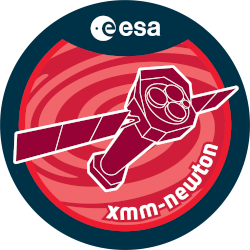

| Proposal ID | 020135 |
| Title | MAINTAINING THE EPHEMERIS OF THE GEMINGA PULSAR UNTIL GLAST |
| Download Data Associated to the proposal | https://nxsa.esac.esa.int/nxsa-sl/servlet/data-action-aio?obsno=0201350101 |
| DOI | https://doi.org/10.5270/esa-3qhpu3c |
| Principal Investigator, PI | Prof JULES HALPERN |
| Abstract | The Geminga pulsar is unique among gamma-ray pulsars in having a precise andcontinuous, phase-connected ephemeris from 1973 up to the present. Since thedemise of the Compton Gamma-ray Observatory in June 2000, the only practicalmethod of maintaining Gemingas ephemeris is with X-ray observations. Followingthe initial XMM observation of Geminga in April 2002, we propose to make shorteradditional observations approximately once per year until 2006, when GLAST willresume the gamma-ray timing of Geminga. The principal scientific need for aphase-connected ephemeris is to provide an absolute phase reference forground-based observations, in particular, for our own efforts to detect opticalpulsations using a phase-binning CCD camera at Palomar Observatory. |
| Publications |
|
| Instrument | EMOS1, EMOS2, EPN, OM, RGS1, RGS2 |
| Temporal Coverage | 2004-03-13T14:55:08Z/2004-03-13T22:12:42Z |
| Version | 17.56_20190403_1200 |
| Mission Description | The European Space Agencys (ESA) X-ray Multi-Mirror Mission (XMM-Newton) was launched by an Ariane 504 on December 10th 1999. XMM-Newton is ESAs second cornerstone of the Horizon 2000 Science Programme. It carries 3 high throughput X-ray telescopes with an unprecedented effective area, and an optical monitor, the first flown on a X-ray observatory. The large collecting area and ability to make long uninterrupted exposures provide highly sensitive observations. Since Earths atmosphere blocks out all X-rays, only a telescope in space can detect and study celestial X-ray sources. The XMM-Newton mission is helping scientists to solve a number of cosmic mysteries, ranging from the enigmatic black holes to the origins of the Universe itself. Observing time on XMM-Newton is being made available to the scientific community, applying for observational periods on a competitive basis. |
| Creator Contact | https://www.cosmos.esa.int/web/xmm-newton/xmm-newton-helpdesk |
| Date Published | 2005-05-01T00:00:00Z |
| Last Update | 2025-08-04 |
| Keywords | "XMM", "gamma ray", "geminga pulsar", "own efforts", "optical pulsations", "palomar observatory", "initial xmm", "practical method", "maintaining geminga", "phase connected ephemeris", "shorter additional", "principal scientific", "gamma ray pulsars", "absolute phase reference" |
| Publisher And Registrant | European Space Agency |
| Credit Guidelines | European Space Agency, Prof JULES HALPERN, 2005, 'MAINTAINING THE EPHEMERIS OF THE GEMINGA PULSAR UNTIL GLAST', 17.56_20190403_1200, European Space Agency, https://doi.org/10.5270/esa-3qhpu3c |